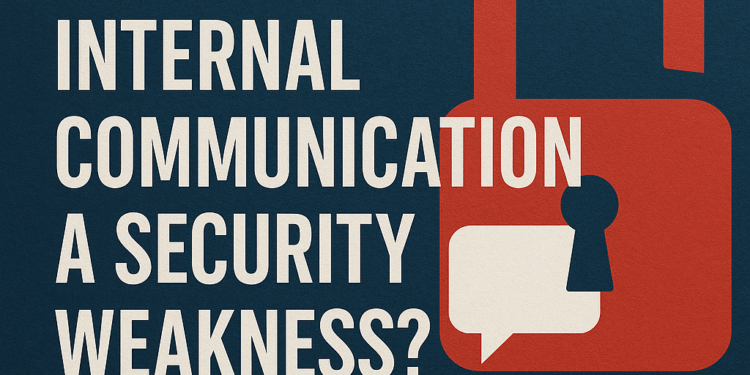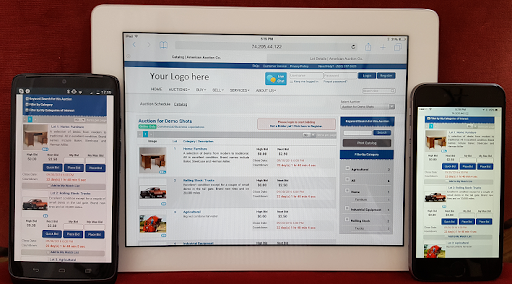Imagine this: your company has invested heavily in cybersecurity. There are firewalls that rival digital fortresses, state-of-the-art intrusion detection systems, and mandatory security training for all employees. You feel confident that your data is protected from external threats. But what about the threat from within? Not the malicious insider, but the well-meaning employee who, in the rush of a busy day, shares a sensitive financial report via a consumer-grade messaging app? Or the team that uses a personal email thread to discuss a forthcoming merger?
This is the silent vulnerability lurking in many modern organizations: unsecured internal communication. While businesses focus on building higher walls to keep attackers out, they often leave the digital hallways, meeting rooms, and water coolers wide open. This article will explore how your everyday internal conversations could be your most significant security weakness, and why transforming them into a culture of secure internal communication is not just an IT priority, but a business imperative.
The Modern Office: A Labyrinth of Digital Conversations
Before we diagnose the weakness, let’s understand the landscape. Internal communication is the lifeblood of any organization. It’s the medium through which strategies are formed, projects are executed, and culture is built. In today’s world, this communication is overwhelmingly digital and happens across a myriad of platforms.
We communicate through:
Email: The old faithful, but often a source of data leaks.
Instant Messaging Apps: Slack, Microsoft Teams, Zoom Chat, etc.
Collaboration Suites: SharePoint, Google Workspace, Confluence.
Video Conferencing: Zoom, Microsoft Teams, Google Meet.
Project Management Tools: Asana, Trello, Jira.
And, alarmingly, “Shadow IT”: The unauthorized use of personal apps like WhatsApp, personal Gmail, or Dropbox to get work done quickly.
This complex web of tools creates a massive “attack surface.” Every message, every shared file, every video call is a potential vector for a data breach if not properly secured.
How Unsecured Internal Comms Become Your Biggest Risk
The dangers of unsecured internal communication are not theoretical; they are real, prevalent, and costly. They manifest in several critical ways:
1. The Data Leak (Intentional or Accidental):
This is the most direct threat. An employee accidentally attaches the wrong file—a spreadsheet containing customer PII or employee salaries—to a mass email. Or, a disgruntled employee, planning their exit, easily exfiltrates intellectual property because there are no digital rights management controls on internal file shares. Without a proper secure internal communication framework, sensitive data flows freely and can just as easily flow out.
2. The Phishing Playground:
Cybercriminals know that employees trust internal communication. A compromised email account becomes a launchpad for highly convincing phishing attacks. A message that appears to come from the CEO to a junior accountant, urging an urgent wire transfer, is far more likely to succeed than one from an unknown external source. If internal channels themselves are not authenticated and secured, they become Trojan horses for attackers.
3. Compliance Catastrophes:
For organizations in healthcare, finance, or legal sectors, data protection isn’t optional—it’s the law. Regulations like GDPR, HIPAA, and SOX mandate strict controls over how sensitive data is handled and transmitted. Using unapproved, unencrypted apps to discuss a patient’s health or a client’s portfolio is a direct violation of these regulations, leading to massive fines, legal action, and irreparable reputational damage.
4. The “Shadow IT” Epidemic:
Frustrated with clunky official systems, employees often turn to tools they find more convenient. The problem is that these consumer-grade apps lack enterprise-level security controls. Company secrets discussed on a personal WhatsApp group have no audit trail, no administrative oversight, and can be copied, forwarded, or stored on personal devices indefinitely. This creates an invisible network of risk that the IT department cannot see or manage.
5. Loss of Intellectual Property:
Your company’s “secret sauce”—the proprietary algorithm, the product roadmap, the marketing strategy—is often discussed and refined in internal meetings and messages. If these communications are not protected, this valuable IP is vulnerable to theft by competitors or malicious actors, erasing your competitive edge overnight.
The common thread in all these scenarios is a lack of a deliberate, organization-wide strategy for secure internal communication. It’s the gap between having tools and having a secure culture.
Addressing the Core Concepts: People Also Ask
To build a robust defense, we must first understand the foundational concepts. Let’s answer the common questions that form the bedrock of this topic.
What is Internal Communication?
Internal communication (IC) is the function responsible for effective communication among participants within an organization. It encompasses all the formal and informal messages, channels, and interactions that facilitate the flow of information between employees at all levels. Its purpose is to ensure that everyone in the organization is aligned, informed, engaged, and working towards common goals. Think of it as the central nervous system of the company, coordinating action and disseminating vital information.
What are the Four Types of Internal Communication?
While models vary, internal communication can generally be categorized into four key types based on its direction and purpose:
Downward Communication: This is the traditional top-down flow of information from leadership and management to employees. Its purpose is to provide direction, disseminate company policies, announce strategic decisions, and cascade goals. Examples include CEO all-hands meetings, company-wide emails from HR, and performance target announcements.
Upward Communication: This is the flow of information from employees to leadership. It is crucial for feedback, innovation, and gauging employee morale. Examples include employee surveys, suggestion boxes, one-on-one meetings with managers, and reports submitted up the chain of command.
Horizontal/Lateral Communication: This occurs between employees at the same or similar hierarchical levels. Its primary purpose is coordination and collaboration. This is the communication that gets work done day-to-day, such as messages between team members on a project, inter-departmental meetings to align on a launch, or a quick chat between colleagues in the marketing and sales departments.
Diagonal/Cross-functional Communication: This cuts across traditional departmental and hierarchical lines. It is often project-based and is essential in modern, agile organizations. An example is a junior engineer from the IT department communicating directly with a senior vice president of marketing about a new feature, bypassing the usual chain of command. This type is highly efficient but can be particularly vulnerable if proper channels and security are not established.
What is Meant by Secure Communication?
Secure communication is the practice of exchanging information between two or more parties in a way that prevents unauthorized access, interception, or manipulation. It ensures that the confidentiality, integrity, and authenticity of the message are maintained.
Confidentiality: The message can only be read by the intended recipient(s). This is typically achieved through encryption, which scrambles the data into an unreadable format that can only be deciphered with a specific key.
Integrity: The message has not been altered or tampered with during transit. Techniques like hashing are used to verify that the message received is identical to the message sent.
Authenticity: The recipient can verify the identity of the sender, ensuring the message is from who it claims to be from. Digital signatures and certificates are used for this purpose.
What is Secure Internal Communication?
Building on the definitions above, secure internal communication is the strategic implementation of secure communication principles within an organization. It is the framework of policies, tools, and cultural practices that ensure all forms of internal communication—downward, upward, horizontal, and diagonal—are confidential, maintain integrity, and are authentic.
It means that when your CEO sends a downward communication about a sensitive restructuring, only the intended employees can read it. It means that when your R&D team collaborates horizontally on a new patent, their ideas cannot be intercepted. It means that when an accountant sends an upward communication containing financial data, the CFO can be certain it hasn’t been altered and is from a verified source. A true secure internal communication strategy seamlessly integrates security into the very fabric of how the organization talks to itself, making protection the default, not an afterthought.
Building Your Fortress: A Strategy for Secure Internal Communication
Knowing the risks and the definitions is only half the battle. The next step is action. Transforming your internal comms from a weakness to a strength requires a multi-pronged approach.
1. Assess and Consolidate Your Tooling
The first step is to conduct a thorough audit. What communication tools are your employees actually using? Identify the official, sanctioned tools and the “Shadow IT” that has crept in. The goal is not to stifle productivity but to consolidate onto a few, robust, enterprise-grade platforms that meet your security needs. Choose vendors that offer end-to-end encryption, data residency options, and comprehensive administrative controls. Reducing the number of tools simplifies security management and user training.
2. Policy is the Foundation: Create and Communicate Clear Guidelines
Technology is useless without governance. Develop a clear, concise, and enforceable secure internal communication policy. This policy should:
Define approved and prohibited communication tools.
Classify data (e.g., Public, Internal, Confidential, Restricted) and specify how each class can be shared.
Outline rules for password management and multi-factor authentication (MFA).
Establish retention policies for messages and files.
Detail the procedure for reporting suspected security incidents.
Crucially, this policy must be communicated effectively and regularly to every single employee. It cannot be a document that sits on a forgotten intranet page.
3. Foster a Culture of Security Awareness
Technology and policy are the hardware and software of your defense; your people are the operating system. The most sophisticated system can be undone by one uninformed click. Continuous security awareness training is non-negotiable. This goes beyond an annual mandatory video. It should include:
Regular phishing simulations to build resilience.
Engaging workshops that use real-world scenarios relevant to different departments.
Clear explanations of the “why” behind the rules, helping employees understand the risks to the company and themselves.
Empowering employees to be the first line of defense, creating an environment where asking “is this secure?” is encouraged.
4. Leverage Technical Controls
Enable and enforce the security features available in your chosen platforms:
Enforce Multi-Factor Authentication (MFA): This is the single most effective step to prevent account takeover.
Utilize Data Loss Prevention (DLP): DLP tools can scan outbound messages and files for sensitive information (like credit card numbers or source code) and block them from being sent or automatically encrypt them.
Implement Access Controls and Permissions: Ensure the principle of least privilege. Employees should only have access to the channels, files, and data necessary for their jobs.
Enable Auditing and Logging: Keep detailed logs of user activity. In the event of a breach, this is essential for understanding what happened and containing the damage.
5. Lead from the Front
A culture of security must be modeled from the top. Leadership must not only endorse the secure internal communication policy but must also be its most visible adherents. When executives use the approved secure channels and follow the same rules as everyone else, it sends a powerful message that security is a core value, not a suggestion.
Conclusion: From Weakness to Strategic Asset
The question, “Is your internal communication a security weakness?” is one that every modern organization must ask itself with brutal honesty. In an era where data is the new currency and reputations can be shattered in an instant, the cost of neglect is simply too high.
The path forward is not to restrict communication but to secure it. By moving from an ad-hoc, tool-centric approach to a strategic, cultural, and policy-driven framework for secure internal communication, you do more than just patch a vulnerability. You build trust among your employees, safeguard your most valuable assets, ensure regulatory compliance, and ultimately, protect the very future of your enterprise. Your internal conversations are the engine of your business. It’s time to make sure that engine is not only powerful but also armored.







